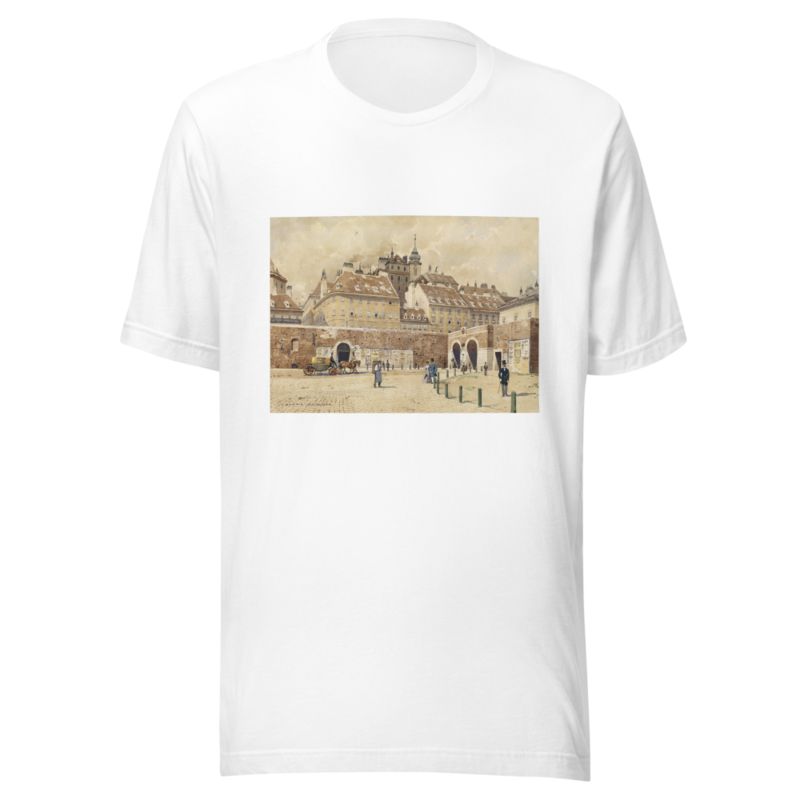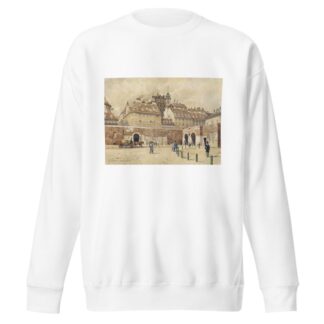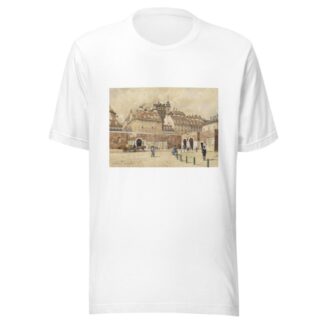Description
Blick auf Wien vom Rotenthurmtor by Franz Poledne printed on a T-Shirt
About the T-Shirt
Regular fit
Standard length, the fabric easily gives into movement
Casual wear
A classic, everyday option loved by our customers
Side-seamed
Constructed by sewing two parts together, creating a fitted look
The Unisex Staple T-Shirt feels soft and light with just the right amount of stretch. It’s comfortable and flattering for all. We can’t compliment this shirt enough–it’s one of our crowd favorites, and it’s sure to be your next favorite too!
- Solid colors are 100% Airlume combed and ring-spun cotton
- Ash color is 99% combed and ring-spun cotton, 1% polyester
- Heather colors are 52% combed and ring-spun cotton, 48% polyester
- Athletic and Black Heather are 90% combed and ring-spun cotton, 10% polyester
- Heather Prism colors are 99% combed and ring-spun cotton, 1% polyester
- Fabric weight: 4.2 oz./yd.² (142 g/m²)
- Pre-shrunk fabric
- 30 singles
- Side-seamed construction
- Tear-away label
- Shoulder-to-shoulder taping
- Blank product sourced from Nicaragua, Mexico, Honduras, or the US
Franz Poledne (1873-1932)
Franz Poledne was an Austrian painter and illustrator; best known for his vedute of Vienna.
In 1888, while still a teenager, he began working in the studios of the set decorator, Hermann Burghart. He worked there until 1893. During that time, he attended the drawing school at the Höhere Graphische Bundes-Lehr- und Versuchsanstalt (Higher Federal Graphical Training and Research Institute). After that, he became an illustrator for magazines such as Über Land und Meer and the Illustrirte Welt. From 1907 until his death, he worked for the Illustrierte Kronen Zeitung.
As a painter, he produced oils and watercolors. His vedute documented the changes taking place in early 20th century Vienna, and he was one of a group of painters, including Rudolf von Alt, Emil Hütter, Franz Kopallik, Richard Moser and Erwin Pendl who created the familiar, sentimental image of “Old Vienna”
He took part in World War I as a Master Corporal in the Landsturm, a reserve unit composed of older men. At the end of the war, he was awarded the Zivil-Verdienstkreuz (Civil Merit Cross) on the Medal for Bravery. He was also one of the numerous painters who were employed by the Royal War Press Quarters
He died following a serious illness. He had been treated by his friend, Dr. Emil Gelny, who later became involved in the Nazi eugenics program.






Reviews
There are no reviews yet.